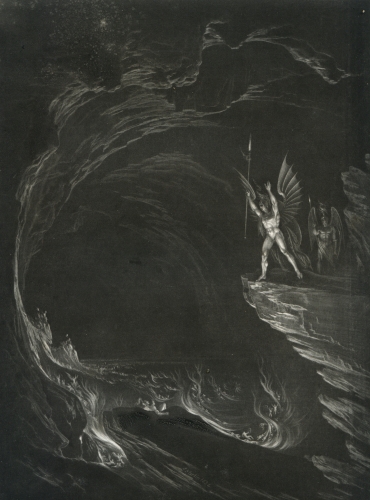
John Martin (1789-1854), ‘Satan arousing the Fallen Angels’, illustration to Book I.314, mezzotint. The
Martin makes up for his poor command of the human form with the stunning, Turner-influenced landscapes in which he plunges the poem’s protagonists. The tiny figures are dwarfed within these sublime vistas, as though to emphasize the universal scheme in which they are tiny players. The essayist Thomas Babington Macaulay observed this tendency in Martin’s illustrations—to promote the background into a character in its own right—but altogether misinterprets his purpose:
"There can be no two manners more directly opposed to each other than the manner of his painting and the manner of Milton’s poetry. Those things which are mere accessories in the description become the principal objects in his pictures: and those figures which are prominent in the descriptions can be detected in the pictures only by very close scrutiny."
In this print of Satan arousing his legions, Martin depicts the infernal leader in substantially the same pose as Richard Westall had 40 years earlier (no. 52). By comparison, Martin’s Satan is a toy engulfed by Hell’s cavernous darkness, which is pictured as a kind of receding sewer or mine shaft: a token, perhaps, of the nascent industrial age.
